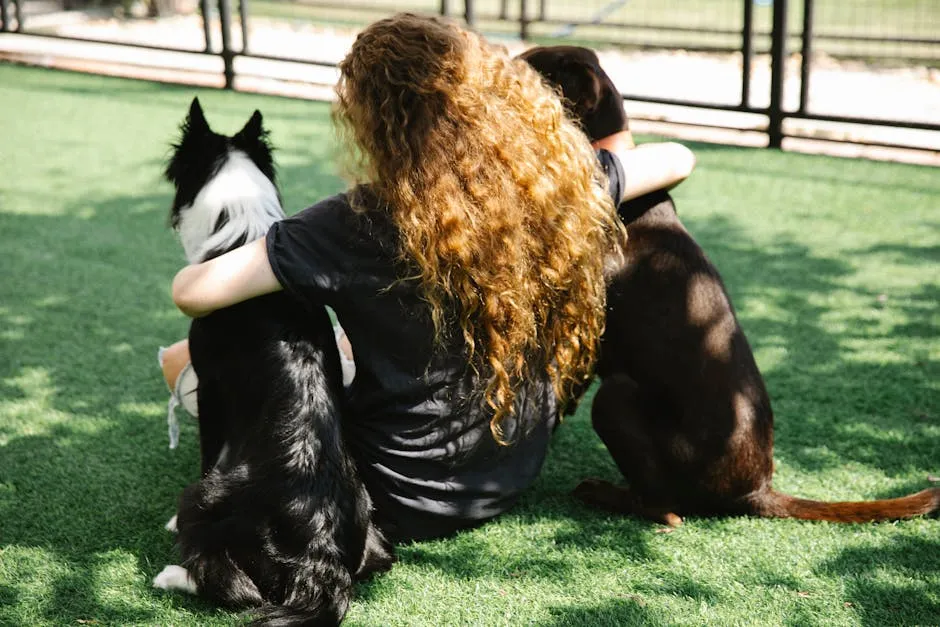Introduction
Dog attacks are more common than you’d think. In fact, about 4.5 million people in the U.S. get bitten each year! Those numbers are staggering. Understanding the statistics behind dog attacks, especially by breed, is crucial for a couple of reasons.
First, it helps us recognize which breeds are involved in most incidents. This knowledge is vital for potential dog owners. It shapes our perceptions and responsibilities when it comes to selecting a breed and ensuring we provide proper training and socialization. After all, owning a dog is a long-term commitment.
Second, data can counteract biases surrounding certain breeds. Stereotypes often mislead potential owners, leading to decisions based on fear rather than facts.
Moreover, we can’t ignore the impact of dog bites on public health. The Centers for Disease Control and Prevention (CDC) highlights that around 800,000 dog bite victims require medical attention annually. These incidents can lead to severe injuries, infections, or even death. Children under the age of 12 and elderly individuals are particularly vulnerable, making it essential for everyone to understand the risks involved.
In summary, knowing how dog attacks break down by breed can empower us to make informed decisions about dog ownership and improve overall safety for our communities. With more awareness, we can create a safer environment for both humans and dogs, ensuring that our furry friends remain companions, not threats.

Key Dog Attack Statistics
Current Overview of Dog Bite Incidents
Every year, approximately 4.5 million people in the United States become victims of dog bites. Out of those, an alarming 800,000 require medical attention. That’s like filling a small stadium with people who need help! The injuries vary, but common ones include punctures and lacerations, often affecting the arms and hands.
Who’s most at risk? Well, children and the elderly top the list. Children aged 5 to 9 are particularly susceptible, accounting for a significant portion of dog bite victims. It’s a shocking reminder of the need for responsible dog ownership and supervision.
Interestingly, about 15.55% of dog bites come from stray dogs. This statistic highlights the importance of community efforts in managing stray populations. On the flip side, unneutered male dogs are about 2.6 times more likely to bite than their neutered counterparts. This suggests that responsible pet ownership, including spaying and neutering, can help reduce the number of bites.
In 2022, over 5,300 postal workers faced dog attacks while on their routes. These dedicated individuals often encounter dogs that feel protective of their territory. This statistic emphasizes the need for better training and socialization, especially for breeds known for aggressive behavior.
It’s worth noting that fatalities from dog bites remain rare yet tragic. Less than 1% of dog attacks result in death, with around 30 to 50 fatalities each year. The odds of dying from a dog bite are about 1 in 53,843. While the numbers may seem low, every life lost is a devastating reminder of the consequences of dog aggression.
Understanding these statistics is critical for dog owners, potential adopters, and the general public. Awareness can lead to better choices, improved training, and ultimately, a safer community for everyone involved.

Breakdown of Dog Attack Statistics by Breed
Most Common Breeds Involved in Attacks
Dog bites can happen for a variety of reasons, but certain breeds often make headlines. Let’s shine a light on the top offenders and their bite statistics.
Pit Bulls: These muscular canines are frequently in the news. In fact, they’re responsible for about 22.5% of dog attack incidents in the U.S. Their reputation isn’t merely due to size; they also account for nearly 66.9% of dog bite fatalities. When a Pit Bull bites, the consequences can be severe.
Rottweilers and German Shepherds: Rottweilers follow closely behind, accounting for 10.4% of fatal attacks. German Shepherds also feature prominently, involved in 4.6% of fatal incidents. These breeds, while often beloved companions, have shown potential for aggressive behavior if not properly trained or socialized.
To clarify just how significant these statistics are, take a look at the table below summarizing dog bite fatalities by breed:
| Breed | Deaths | % of Total Fatal Attacks |
|---|---|---|
| Pit Bull | 284 | 65.6% |
| Rottweiler | 45 | 10.4% |
| German Shepherd | 20 | 4.6% |
| Mixed Breed | 17 | 3.9% |
| American Bulldog | 15 | 3.5% |
| Mastiff/Bullmastiff | 14 | 3.2% |
| Husky | 13 | 3.0% |
| Unknown | 11 | 2.5% |
| Labrador Retriever | 9 | 2.1% |
| Boxer | 7 | 1.6% |
Understanding these statistics is vital for potential dog owners. It highlights the importance of responsible ownership, training, and socialization.

Fatalities by Breed
The chilling reality is that fatal dog attacks occur each year, and certain breeds are more often involved. While all dogs have the potential to bite, some breeds have a higher incidence of fatal attacks.
Statistics reveal that about 30 to 50 fatalities occur annually due to dog bites. Among these, Pit Bulls account for a staggering 66.9% of deaths. This alarming figure underscores the necessity for awareness and education regarding breed-specific behaviors.
Rottweilers and German Shepherds also contribute significantly to the fatality numbers. Rottweilers are involved in 10.4% of fatal incidents, while German Shepherds represent 4.6%. These statistics serve as a stark reminder that even beloved breeds can pose risks if not managed properly.
Children under the age of 12 are particularly vulnerable to dog attacks. In fact, they account for a significant portion of the fatalities. Thus, it is crucial for parents and guardians to supervise interactions between children and dogs, regardless of breed.
In summary, understanding dog bite fatalities by breed is essential. This knowledge can help potential dog owners make informed decisions and contribute to safer communities. The responsibility lies not just with the dogs, but with the owners to ensure their pets are well-behaved, trained, and socialized. By fostering responsible pet ownership, we can work towards a future where dog attacks are a rarity rather than a statistic.

Factors Contributing to Dog Bites
Owner Influence and Dog Behavior
Dog bites often stem from owner behavior and training practices. Responsible ownership is crucial. Dogs thrive in environments that promote positive interactions, socialization, and training. A well-trained dog is less likely to bite. Conversely, poorly trained dogs may react aggressively.
Socialization plays a significant role too. Dogs that interact with diverse people and other animals tend to be more adaptable. They learn to handle various situations without resorting to aggression. Think of it as canine kindergarten—without it, they might flunk out!
Breed characteristics matter, but they aren’t the whole story. Some breeds have a reputation for aggression, like Pit Bulls and Rottweilers. However, an individual dog’s behavior largely depends on its upbringing and training. A sweet-natured Rottweiler can be a loving companion, while an untrained, anxious Yorkie might bite out of fear.
It’s also worth noting that unneutered male dogs are more likely to engage in aggressive behaviors. Around 70% of dog bites come from male dogs, particularly those that haven’t been neutered. So, if you want a safer pet, consider the snip!
Additionally, the owner’s actions significantly influence a dog’s temperament. Neglect, abuse, or lack of supervision can lead to aggression. A frightened or mistreated dog may bite as a defense mechanism. Owners must understand their responsibilities in shaping their pet’s behavior. After all, a dog’s actions are often reflections of their environment.
Ultimately, every dog has the potential to bite, but the risk diminishes with good ownership practices. Proper training, socialization, and responsible pet handling can turn a potentially dangerous situation into a positive experience. Let’s remember—well-behaved dogs lead to happier owners and safer communities.

Circumstances Leading to Dog Attacks
Dog bites don’t happen in a vacuum; they often arise from specific circumstances. Understanding these scenarios can help prevent future incidents.
One common situation is provocation. Dogs may bite when they feel threatened or cornered. A child pulling a dog’s tail or approaching it while eating can trigger a defensive response. It’s vital to teach kids how to interact respectfully with dogs to avoid such scenarios.
Fear is another significant factor. Dogs that encounter unfamiliar stimuli may react aggressively. A loud noise or sudden movement can surprise a dog, prompting it to bite. This reaction is often rooted in anxiety, so creating a calm environment is essential.
Lack of supervision plays a critical role too. Many bites occur when dogs are left unsupervised with children or strangers. A curious child may approach a dog without understanding its body language. As a result, the dog may feel threatened, leading to a bite. Parents should supervise interactions closely to ensure both children and pets remain safe.
Stray dogs also pose a risk. Around 15.55% of dog bites come from strays, highlighting the dangers of uncontrolled canine populations. Communities must work together to manage strays through responsible ownership and spay/neuter programs.
To sum it up, understanding the circumstances surrounding dog bites is crucial for prevention. By recognizing potential triggers and maintaining supervision, we can create safer environments for dogs and humans alike. After all, a little awareness goes a long way in preventing dog bites and fostering better relationships between pets and people.

Legal and Insurance Considerations
Liability and Dog Bite Claims
When it comes to dog bites, the law takes a keen interest. Liability is a central concept in dog bite cases, determining who pays the price for a dog’s misbehavior. The laws vary by state, but many adhere to the “one-bite” rule. This rule suggests that a dog owner isn’t typically liable for the first bite unless they were aware of their dog’s aggressive tendencies. It’s like a free pass for dogs to make a mistake—once.
However, that doesn’t mean owners can let their dogs run wild. If a dog has previously bitten someone, the owner must take action. Ignoring prior incidents can turn a dog into a legal liability. Owners should always prioritize safety and training to prevent any mishaps.
The financial implications of dog bite claims can be staggering. On average, dog bite claims result in settlements around $64,555. These figures have risen sharply in recent years, reflecting increased medical costs and broader awareness of dog behavior issues. In fact, the total payouts for dog-related injuries exceeded $1.136 billion in 2022! It’s a hefty price tag for negligence or inadequate training.
In 2023, there were 19,062 dog bite claims filed nationwide, marking an 8.3% increase from the previous year. This uptick in claims is an alarming trend, and it emphasizes the importance of responsible ownership. Dog owners must recognize the potential risks of their pets and act accordingly.
Insurance companies are well aware of these risks, and they often adjust their policies based on a dog’s breed. Some breeds are seen as higher risk and can lead to increased premiums or outright exclusions in policies. So, if you’re considering adopting a dog, it might be wise to check your insurance policy first.
Lastly, it’s important to note that dog bite victims have rights. If someone suffers injuries from a dog attack, they may pursue compensation for medical expenses, lost wages, and emotional distress. Seeking legal counsel can make a significant difference in navigating these waters. After all, no one wants to find themselves in a courtroom, especially when it could have been avoided with a little training and responsibility.

State-Specific Legislation
State laws on dog bites can be as diverse as the breeds themselves. Breed-specific legislation (BSL) has gained traction in several states, aiming to reduce the risk of bites from certain breeds deemed dangerous. However, the effectiveness of such laws is widely debated. Many experts argue that focusing on breed rather than individual behavior does little to address the underlying issues of dog aggression.
For instance, California, Texas, and Florida are among the states with the highest dog bite claims. In California alone, dog bite claims accounted for 11% of all claims nationwide in 2022. This statistic highlights the significant role local legislation plays in shaping dog ownership responsibilities.
Fatal dog attacks, while rare, tend to occur more frequently in states with higher dog populations. California has reported the highest number of dog bite fatalities over the years, with 63 deaths recorded from 2005 to 2020. Surprisingly, children aged one to four are often the most vulnerable, accounting for nearly 30% of these tragic incidents.
Moreover, states like New York and Illinois also see a significant number of claims, further emphasizing the need for effective dog management and responsible ownership practices. The one-bite rule may apply in these states, but owners should never assume their dog will behave perfectly. Prevention is always better than dealing with the aftermath.
In conclusion, understanding legal implications and state-specific legislation is crucial for dog owners. It not only protects them from potential liabilities but also contributes to public safety. Responsible ownership, training, and adherence to local laws can significantly reduce the risk of dog bites and related incidents. By staying informed and proactive, we can create a safer environment for everyone in our communities.

Preventative Measures and Responsible Ownership
Understanding dog behavior is vital for preventing bites. Every dog has its quirks and personality traits. Knowing your dog’s body language can help you avoid misunderstandings. For instance, a wagging tail doesn’t always mean a happy dog. It could signal excitement or anxiety. Learn to read your furry friend!
Training is essential. A well-trained dog responds better to commands and is less likely to bite. Start training early with socialization. Expose your dog to different people, environments, and other animals. This helps them become well-adjusted adults. Positive reinforcement is key. Reward good behavior with treats and praise!
Speaking of treats, why not make training more fun with a Dog Treats Variety Pack? These delicious morsels will motivate your pup to learn new tricks and keep them engaged during training sessions!

When children are involved, supervision is crucial. Teach kids how to interact with dogs. Encourage gentle petting, and explain the importance of giving dogs space. Dogs need a safe zone, especially when they eat or sleep. Never leave young children alone with a dog, even if they seem friendly.
Unfamiliar dogs can be tricky. Approach them slowly and calmly. Avoid direct eye contact, as this can be perceived as a threat. If a dog seems agitated, back away slowly. Always ask the owner for permission before petting a dog. Respect their boundaries!
When meeting other dogs, keep introductions slow. Allow both dogs to sniff each other while on leashes. Monitor their body language. If either dog shows signs of aggression, separate them immediately. It’s better to prevent a potential incident than to react afterward.
Speaking of safety, have you considered a Dog Anxiety Vest? This can help keep anxious pups calm during stressful situations, making interactions a breeze!
Training doesn’t just benefit your dog. Responsible ownership involves understanding your role as a pet parent. Regular vet visits ensure your dog is healthy and up-to-date on vaccinations. Spaying or neutering your dog can reduce aggressive behavior and help control the pet population.
Another factor to consider is the environment. Create a dog-friendly space at home. Ensure your yard is secure, with high fences and no escape routes. Avoid leaving food or toys outside that could attract stray dogs. If you encounter strays, contact local animal control for assistance.

For extra protection during outdoor activities, don’t forget to invest in a Dog Life Jacket for Water Safety. They’ll look adorable while staying safe in the water!
Community education also plays a role. Promote awareness about dog behavior and bite prevention. Host workshops or collaborate with local shelters to organize training sessions. When communities work together, everyone benefits, including our canine companions.
In summary, understanding dog behavior, proper training, and responsible ownership are critical in preventing dog bites. By fostering a culture of respect and awareness, we can create safer environments for both dogs and humans. After all, we all want happy, well-adjusted pets that bring joy to our lives.

Conclusion
Dog attacks and bites are serious issues that affect many people each year. Understanding the statistics behind dog attacks by breed can reveal significant insights. For instance, Pit Bulls account for a staggering percentage of fatalities. This highlights the importance of responsible dog ownership.
To prevent dog bites, owners must prioritize training and socialization. Proper education on dog behavior can significantly reduce risks. Owners should recognize that any dog can bite when provoked, regardless of breed. Thus, understanding their pet’s needs is crucial.
Communities also play a vital role in preventing dog bites. By promoting awareness and education, we can create safer neighborhoods for everyone. Encourage responsible ownership and advocate for better training practices.
Staying informed is key. Dog owners should keep up with local laws and regulations surrounding dog ownership. Regular veterinary care ensures dogs are healthy and less likely to exhibit aggressive behavior.
In conclusion, being proactive in understanding dog behavior and ownership responsibilities can lead to safer interactions. Let’s work together to prevent dog bites and foster harmonious relationships between humans and their furry friends.
FAQs
What dog breeds are most likely to bite?
Pit Bulls, Rottweilers, and German Shepherds are commonly associated with biting incidents.
How can I prevent dog bites?
Educate yourself about dog behavior, train your dog properly, and supervise interactions with children and unfamiliar dogs.
What should I do if bitten by a dog?
Clean the wound, seek medical attention, and report the incident to local animal control if necessary.
Are dog attacks more common in certain areas?
Yes, urban areas with higher dog populations often report more dog attacks.
What legal recourse do I have after a dog bite?
Victims can seek compensation for medical expenses and damages. Consult with a personal injury attorney for guidance.
Please let us know what you think about our content by leaving a comment down below!
Thank you for reading till here 🙂
Understanding the statistics behind dog attacks by breed can reveal significant insights that inform responsible dog ownership.
And for those who want to ensure their furry friends are well-prepared for all situations, consider a Dog First Aid Kit. It’s a must-have for any dog owner who loves to adventure outdoors!
All images from Pexels




